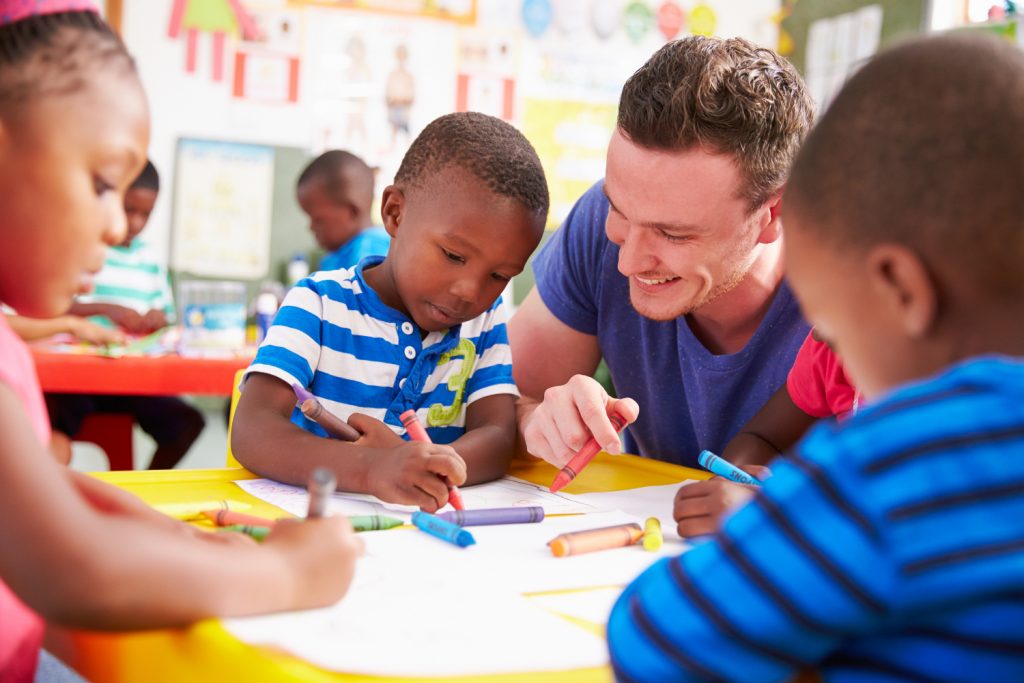
Shady Oak believes in preparing children for adulthood by building on “6 Pillars”: Connection, Communication, Collaboration, Creativity, Critical Thinking, and [Capable] Problem Solving. From late February through March this year, our blog is exploring each Pillar in practical detail.
“Creativity” is a much-misunderstood term, often equated with “Do whatever you feel like doing, and don’t bother with any rules.” What that approach usually creates is chaos. Professional artists know better: if you want to be productively creative,
- First, choose the area you want to create in.
- Then, practice the basic rules and become familiar with the parameters.
- Then, you can experiment, stretch the boundaries, and create new and better works.
You can use simple principles to encourage creativity in your students, helping them work within much broader boundaries than a stifling “you’re supposed to color the sky blue” approach.
Remember That Creativity Isn’t Just About Art
Even answering a simple “choice” question—“Would you rather read the poetry book or the dinosaur book?”—requires personal initiative, a major ingredient in creativity. Whenever possible, allow the kids space for working things out their own way. There may be only one correct answer to a math problem, but there can be different paths to that answer; and what does anyone gain from arguments over whether the two-digit number is added to the three-digit one or vice versa?
Let Them Contribute
“Lecture-oriented” teachers are not noted for their popularity. Even adult learners start to drowse when an instructor talks nonstop for forty-five minutes, brushing off raised hands and never considering whether anyone really understands what’s being said. It may keep lessons running on schedule, but it does little for students’ creativity and even less for the teacher’s. Leave margin for students to request clarifications, volunteer new perspectives, even openly disagree with you. Instead of “correcting” dubious opinions, encourage whoever expresses them to explain the reasoning behind: if nothing else, that provides useful practice in critical thinking. (And even if the other party is dead wrong, they’ll accept that fact with less argument after discovering it for themselves.)
Organize Hands-On Projects
Group learning is most effective when it allows for a range of individual learning styles—including learning by doing. Even students inclined to reading or listening styles benefit from opportunities to put knowledge to practical use. So include regular hands-on projects in your curricula: tie them to lesson objectives and to real-world practicality; outline goals and parameters; divide the kids into teams; and let them run with it. You’ll be surprised at what they discover!
Maximize Learning by Minimizing Grades
Project or quiz, make a point of evaluating student work not by the number of “right” answers, but for imagination and effort. Nothing stifles creativity like an obsession with beating everyone else to the head of the class. When you emphasize the true learning values, you equip everyone to keep growing and seeking new challenges. And that attitude is key to a lifetime of creativity!
Blessings to parents and children of all ages!


